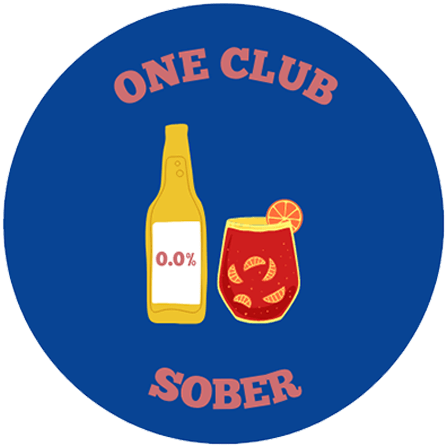Thinking of switching to non-alcoholic drinks? You might be wondering what’s the difference between alcoholic and non-alcoholic drinks.
Besides the obvious lack of alcohol in a non-alcoholic drink, I have also found other differences between alcoholic and non-alcoholic drinks.
These are my top 4 differences:
1. The amount of alcohol
An average alcoholic beer typically has between 1.15% and 15% ABV, whereas a non-alcoholic beer has less than 0.5% ABV (which is roughly equivalent to the alcohol content of orange juice), or even zero traces of alcohol.
Sometimes, I encounter people arguing with me that 0.5% ABV still contains alcohol, suggesting that such drinks are not entirely alcohol-free.
In response, I like to point out that 0.5% ABV is the same amount of alcohol found in a glass of orange juice, and I don’t see people trying to avoid OJ due to its alcohol content.
2. The process is different

For non-alcoholic beers, there’s traditionally two methods of brewing:
- Some non-alcoholic beers are brewed using the traditional fermentation process to full then have the alcohol removed at the end.
- Others are brewed right up to the stage before fermentation and no alcohol needs to be removed.
The first brewing process usually results in a tiny trace of alcohol that is 0.5% ABV or less, while the latter brewing process would often result in zero alcohol content because alcohol is created during fermentation.
For non-alcoholic wines, the process isn’t very different from making alcoholic wines. The picking and sorting of grapes, all the way up to the fermentation process remains the same.
Non-alcoholic wines even go through an ageing process, and this is what makes non-alcoholic wines different from grape juice. There are two main ways of making non-alcoholic wines:
- Some wineries use vacuum distillation which removes alcohol at 25°C-30°C, followed by blending aromatics back in at the end.
- Others use the process of reverse osmosis to remove the alcohol through filtration. Reverse osmosis involves using high pressure to push the wine through a membrane that will only allow water and alcohol to seep past it.
They do this multiple times until the original wine becomes a concentrate, and water is then added to the concentrate to become non-alcoholic wine.
3. It is healthier to drink non-alcoholic drinks

When I compare the calories between non-alcoholic drinks and alcoholic drinks, non-alcoholic drinks are definitely better for weight loss and are much healthier than alcoholic drinks.
For example, just comparing calories, an average non-alcoholic beer has around a third to half the calories of an alcoholic beer.
| Alcoholic Beer | Non-Alcoholic Beer |
|---|---|
| Heineken – 42 kcal / 100ml | Heineken 0.0 – 21 kcal / 100ml |
| Budweiser – 41 kcal / 100ml | Budweiser Zero – 14 kcal / 100ml |
| Guinness Extra Stout – 35 kcal / 100ml | Guinness 0.0 – 17 kcal / 100ml |
Non-alcoholic drinks have other health benefits as well
In this research, they have found that drinking alcohol-free or dealcoholized beers (they are the same thing) can provide cardiovascular benefit.
This is because non-alcoholic beers can inhibit thrombogenic activity, which could have a beneficial effect on the development of coronary artery disease.
I have also found other interesting research on how non-alcoholic beer can help you sleep better because they act as a sedative, and how non-alcoholic beers can help with muscle inflammation after exercise.
Watch out for the sugar in non-alcoholic drinks
While not all non-alcoholic drinks have added sugar, I have often found that sugar is used as a flavor enhancer after alcohol is removed.
Due to the brewing process of non-alcoholic drinks, sugar is commonly found in many non-alcoholic beers and wines. Additionally, sugar may be added to enhance the taste since the flavor of alcohol has been removed.
So if you’re watching your sugar intake, be sure to read the labels to ensure that you’re choosing only non-alcoholic drinks with zero sugar.
If you’re watching your sugar intake, my favorite non-alcoholic beer with no sugar is Partake Brewing’s Pale Ale. It has only 10 kcal and 0 carbs and 0 sugar.
Plus, it tastes great (check out our full review of the Partake Brewing Pale Ale).
4. There’s a difference in taste between alcoholic and non-alcoholic drinks
After trying numerous non-alcoholic drinks, ranging from NA beers to NA wines, I still believe there’s a notable difference in taste between alcoholic and non-alcoholic beverages.
The taste of alcohol carries a distinct aroma and viscosity that I don’t often encounter in non-alcoholic drinks.
However, I’ve found that certain categories of non-alcoholic beverages come remarkably close to replicating the taste of their alcoholic counterparts. Many non-alcoholic beers, for instance, evoke the flavor profile of traditional beers.
Gone are the days when options were limited to brands like O’Douls or other mass-market non-alcoholic beers. Nowadays, craft non-alcoholic breweries are emerging across the United States, Australia, the UK, and various other countries.
These craft beer breweries produce non-alcoholic beers with impressive flavors, and advancements in alcohol removal technology have significantly improved over the past few years.
We’ve even done a taste test between the Lagunitas IPA and Lagunitas IPNA to answer the age-old question on whether non-alcoholic beer tastes like alcoholic beer!

Overall, I find that non-alcoholic beers can still be as satisfying as their alcoholic counterparts, even though they might lack the same beer aroma due to the removal of alcohol or insufficient time for yeast development.
Personally, I’m not seeking a non-alcoholic beer that tastes one hundred percent like its alcoholic counterpart.
While I appreciate a taste similar to the alcoholic version, I’m also intrigued by the diversity of flavors and the exploration of different yeast types in non-alcoholic beer production.
Taste is subjective, but I believe many would be pleasantly surprised by how closely non-alcoholic beers can resemble their alcoholic counterparts.
Non-alcoholic wines, on the other hand, still lack the body and viscosity to mimic real wine.
